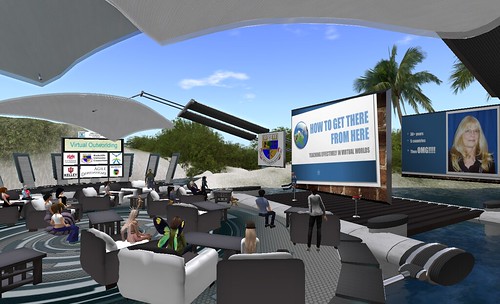Most of us now spend a large part of our time engaged in video meetings with colleagues, students, family and friends and the web is overflowing with advice about how to make these meetings more effective, interactive and engaging. The weaknesses of online meetings have been exposed and discussed with privacy and security as major themes. Many people feel uncomfortable putting themselves on view to so many relative or complete strangers with the risk that someone finds it amusing to take screenshots that could be used later. In tools like Zoom, the meeting host has little or no control over how the participants view the session and there's a risk that some of them spend the meeting gazing at, say, a female student who they find attractive without her being able to stop such unwanted attention.
Some people decide therefore to keep their cameras switched off during online sessions. This may be to prevent unwanted attention or because they are ashamed of their chaotic home or because they don't feel confident or presentable enough to be visible in the meeting. This can be disconcerting for a teacher as in a recent Norwegian article (see Khrono - in Norwegian) where a university teacher wrote about the loneliness of teaching in Zoom to an invisible and generally silent group of students. They were willing to use the chat but did not want to be seen or heard.
At the same time, Facebook have been promoting a tool to help you create a relatively lifelike caricature avatar for your profile. This attracts many users who prefer not to use a real photo of themselves in social media and I wonder if it's time for the return of avatars in synchronous video meetings. About 12 years ago many of us were experimenting with meetings in the virtual world of Second Life. Back then it was still a bit unstable for those who lacked good graphics cards or bandwidth, but we were able to meet and discuss in interesting virtual environments (under the sea, in space, on a tropical island, you name it). It gave an added sense of place to the online meetings rather than the two-dimensional wall of talking heads we have in today's meetings. Second Life is still there and is used by all sorts of enthusiasts, including many educators, for roleplay, simulations and exhibitions. There are also numerous other virtual world tools offering customised environments for virtual exhibitions or conferences and the chance to wander around as an avatar, mingling and interacting with other visitors (see, for example, IMVU, Virtway)
Despite a barrage of hype, Second Life was probably ahead of its time back around 2008, but I always liked the spatial element. I still remember discussions sitting around a camp fire in a forest or listening to an evening outdoor piano concert in a small town by the sea with about 100 other avatars. According to one article a colleague of mine wrote back then, some students felt more comfortable communicating in the virtual world than in a regular video meeting because it was their avatar who was speaking. There are of course very good reasons for meetings where participants must show their faces, but I wonder if some discussions could benefit from a certain degree of anonymity.
Time for virtual worlds to make a comeback?

No comments:
Post a Comment
Note: Only a member of this blog may post a comment.